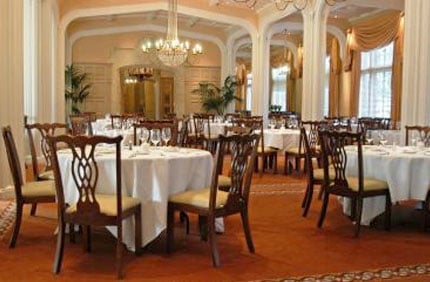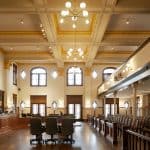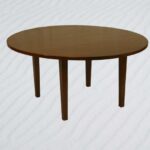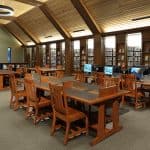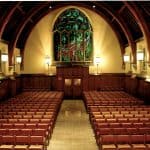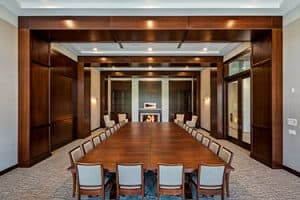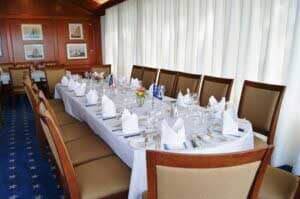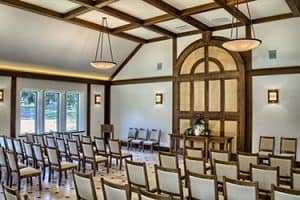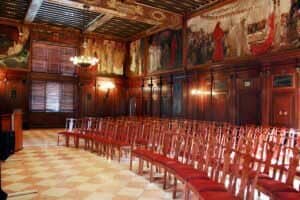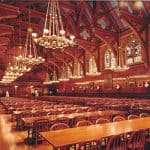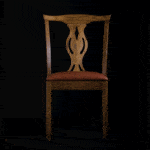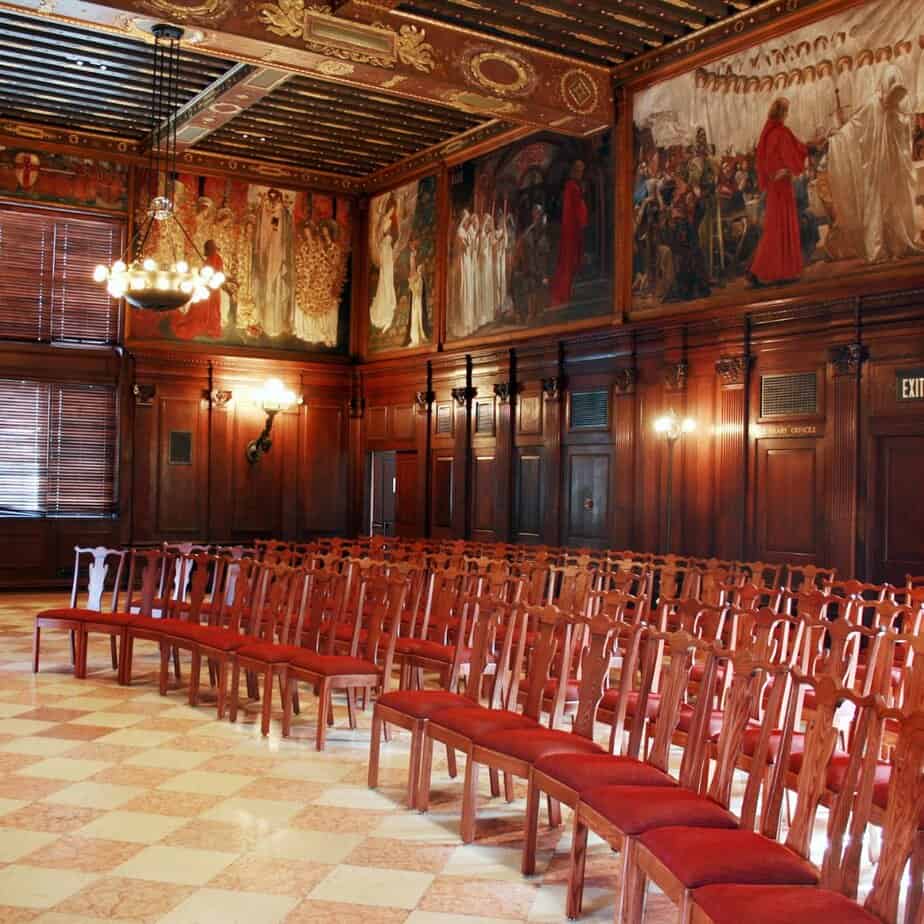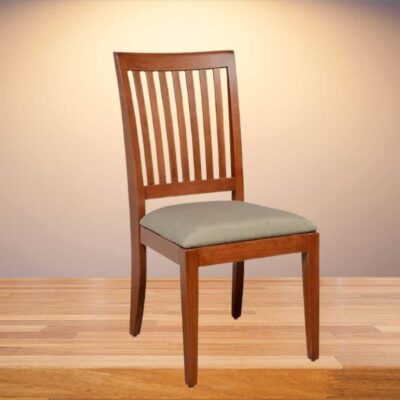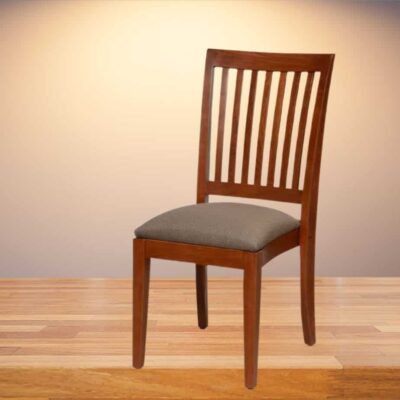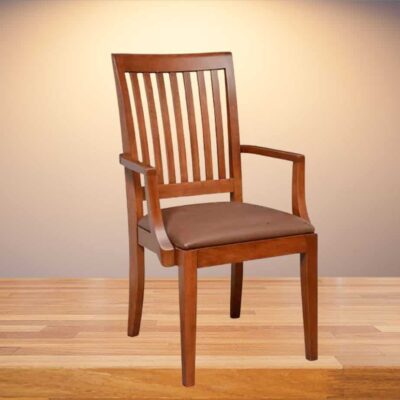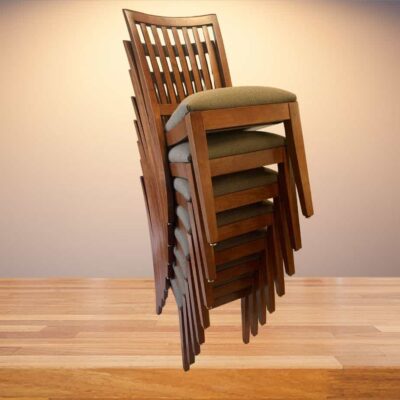When planning or renovating a library, every detail matters. Shelving, lighting, and study tables may get top billing, but seating is where patrons spend most of their time. Library chairs are more than a place to sit; they are tools for study, reflection, and community engagement. At Eustis Chair, we have spent more than three decades building hardwood chairs for some of the nation’s most iconic libraries, from the New York Public Library’s Rose Reading Room to the Abbey Room at the Boston Public Library.
To help answer the most common questions librarians, architects, and facility managers ask, we created this comprehensive FAQ on library chairs.
What is a library chair?
A library chair is a purpose-built seat designed for reading and study environments. Unlike standard dining or event chairs, library chairs are engineered to withstand heavy daily use while providing long-term comfort. The best models combine classic design with modern joinery, ensuring they fit seamlessly into both historic and contemporary spaces.
For example, the Charleston Chair received a Modern Library Award Gold Medal. Judges praised its aesthetic appeal and exceptional durability, proving that true library seating must meet both design and functional needs.
What kind of chairs go with a library table?
The right chair should match the scale and design of the library table. With most study tables built at 29 to 30 inches tall, the ideal library chair seat height is about 17 to 18 inches, creating ergonomic alignment for reading and writing.
Style matters too. In historic reading rooms, traditional hardwood chairs like the Rose Reading Chair complement tables with timeless silhouettes. In flexible study commons, stackable hardwood chairs like the Claremont offer durability without sacrificing elegance. Choosing chairs and tables in the same wood species and finish ensures visual harmony across the room. Eustis Chair can manufacture chairs to match your space.
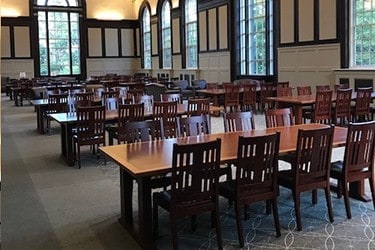
Is there a standard height for library chairs?
Yes. The standard seat height for a library chair is 17 to 18 inches, perfectly suited to standard library tables. The overall chair height often ranges from 33 to 39 inches, depending on design. At Eustis Chair, all dimensions can be customized to meet ADA requirements or to match custom-built tables, ensuring every patron feels comfortable.
What is the best chair for long hours of reading?
The best chair for extended reading offers both ergonomic support and comfort. Features such as a gently scooped seat, lumbar curve, and supportive backrest help patrons stay focused without fatigue. Upholstered seating can add extra comfort, though hardwood scooped seats are also effective for long sessions.
One example is the Charleston Chair is a popular choice for libraries that prioritize comfort for patrons. Librarians have praised its supportive design, making it ideal for patrons who spend entire afternoons immersed in research.
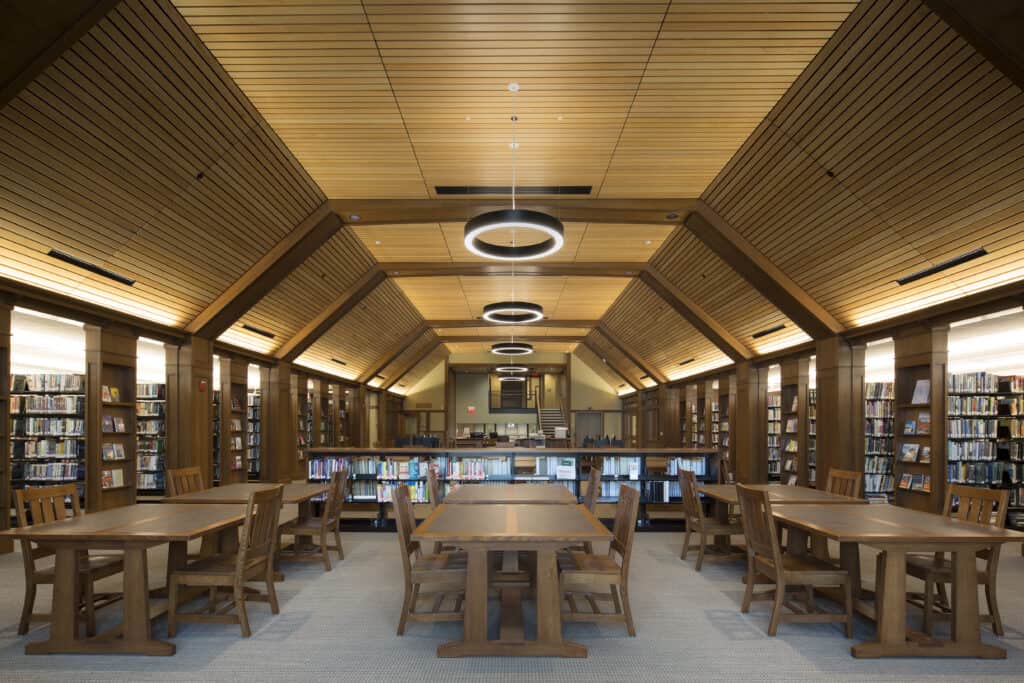 What makes a good library chair?
What makes a good library chair?
A good library chair balances durability, comfort, and timeless style. It should withstand decades of use, often by thousands of patrons each year. Solid hardwood construction is preferred, paired with joinery strong enough to handle daily wear. The proprietary Eustis Joint® reinforces chair joints with concealed steel rods and epoxy, making them the strongest part of the chair rather than the weakest. This innovation allows Eustis chairs to come with a 20-year warranty against joint failure.
What materials are best for library chairs?
Hardwood is the traditional and most durable material for library seating. Finishes should be low-VOC and catalyzed for longevity, ensuring both air quality and resistance to scratches. For libraries that value eco-conscious design, FSC-certified wood offers sustainability without compromising durability. Upholstered seats in high-performance fabrics can add comfort while still meeting heavy-use demands.
Do library chairs need to match the tables?
Chairs and tables do not need to be identical, but visual harmony is important in creating a cohesive environment. Matching wood species and finishes creates a unified look, while mixing styles can bring character when thoughtfully executed. At the New York Public Library, the Rose Reading Chair was carefully designed to reproduce the style of the original barrel-back chairs, complementing the grandeur of the historic reading tables.
Can library chairs be stacked?
Yes. Many modern hardwood chairs are designed to stack without compromising durability. Stackable chairs are ideal for multipurpose rooms or spaces where flexibility is key. Eustis stackable models, such as the Claremont, Charleston, and Pembroke, can stack between 6 and 10 chairs high while protecting the finish of each seat. Each is engineered with the Eustis Joint® and tested to BIFMA commercial seating standards and beyond, ensuring they hold up to decades of institutional use.
What is the most durable library chair design?
Durability comes from strong joinery and high-quality hardwood. Chairs constructed with the Eustis Joint® have been proven to last for decades, even in libraries that see thousands of daily visitors. Harvard University’s Annenberg Hall still uses Edison chairs built in 1992, a living example of durability in action. Designs like the Saint Marks Chair and the Nevada showcase architectural character while meeting the strictest standards of strength.
Are library chairs ergonomic?
Yes. While traditional in appearance, many modern library chairs are designed with ergonomics in mind. Features such as contoured backs, lumbar support, and gently scooped seats help patrons maintain posture during long study sessions. Ergonomics do not mean sacrificing elegance; our library chairs balance elegance with comfort engineered for long-term use.
Can library chairs be customized?
Absolutely. Customization allows libraries to create a unified aesthetic that reflects their identity. Options include wood species, stain finishes, seat upholstery, engraving, and even slight adjustments to dimensions. Schools and universities often add logos or seals, while public libraries may select custom finishes to match historic woodwork. Explore our Library Collection to see examples of customization in action.
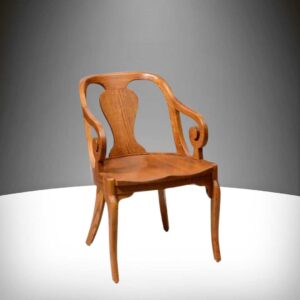
NYPL Chair (Rose Reading Room Chair) by Eustis Chair
Do you make antique replica chairs?
Yes. Eustis Chair is proud to reproduce historic chair designs when a project calls for preservation. One of our most celebrated examples is the Rose Reading Room Chair created for the New York Public Library’s Rose Reading Room. This project involved carefully replicating the original barrel-back chairs that had graced the space for over a century, but we engineered them with the Eustis Joint® to ensure decades of durability. The result preserved the character of the iconic reading room while preparing it for heavy daily use by thousands of visitors. Coverage of this restoration even appeared in Library Journal.
How much does a library chair cost?
The cost of a library chair depends on design, materials, and customization. While hardwood chairs may carry a higher upfront cost than mass-produced alternatives, their durability makes them a smarter investment over decades of use. A chair that lasts 30 years or more is often less expensive in the long run than replacing cheaper seating every few years. For perspective on furniture budgeting in libraries, American Libraries Magazine often discusses the importance of investing in long-term infrastructure.
What are the trends in library seating?
Trends in library seating reflect broader shifts in education and community spaces. Sustainability is a priority, with many institutions requiring FSC-certified wood and low-emission finishes. Flexible layouts are also popular, calling for stackable hardwood chairs that move easily without sacrificing elegance. Finally, antique-inspired designs reimagined with modern joinery—such as the Rose Reading Chair—allow libraries to maintain a sense of history while planning for the future.
Library Chairs
Library chairs are more than furniture. They shape how patrons experience a space, influence comfort during long hours of reading, and stand as symbols of permanence in institutions dedicated to learning. Whether a library needs stackable flexibility, historic reproductions, or award-winning ergonomic comfort, hardwood chairs built with the Eustis Joint® provide solutions that endure for decades.
Ready to explore seating that balances tradition, durability, and sustainability? Visit our Library Chair Collection to find the right fit for your project.













